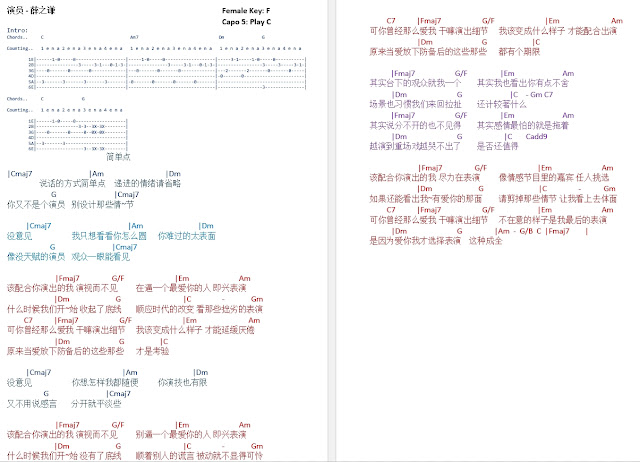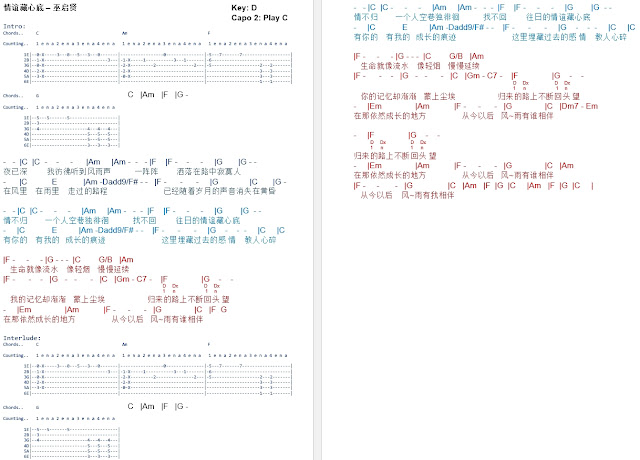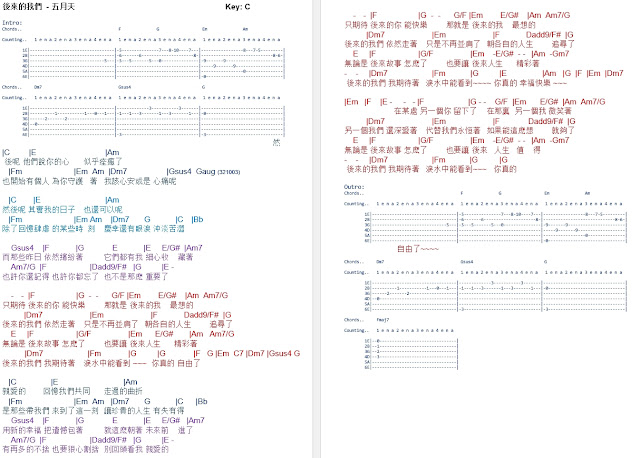Pages
- Home
- Guitar Lessons
- Lesson Types
- Guitar Lesson Schedule
- Guitar Lesson FAQ
- Students' Testimonials
- Student's Showcase
- Full Song Directory
- FREE Guitar Lesson eBook
- Buy Guitar Lesson eBook
- Buy Guitar Song eBook
- Chord Formulas & Derivations
- Chord Chart
- Quick Guitar Tips
- My Background
- About this Site
- Popular Songs for Learning
- Donations
Saturday, December 31, 2016
Thursday, December 22, 2016
Wednesday, December 14, 2016
Thursday, November 17, 2016
Saturday, November 12, 2016
Friday, November 11, 2016
Saturday, October 29, 2016
Thursday, October 20, 2016
Tuesday, October 18, 2016
Wednesday, October 12, 2016
Friday, October 7, 2016
Sunday, September 25, 2016
Wednesday, September 21, 2016
Sunday, September 18, 2016
Friday, September 16, 2016
Sunday, September 11, 2016
Friday, September 9, 2016
Friday, September 2, 2016
Wednesday, August 31, 2016
Friday, August 26, 2016
Wednesday, August 24, 2016
Wednesday, August 17, 2016
Urban Zakapa - No Way (Chords)
Labels:
Chords,
Doctors OST,
K-pop,
Korean,
Kwon Soonil,
Park Yongin,
U,
Urban Zakapa,
Videos
Saturday, August 6, 2016
Wednesday, August 3, 2016
Thursday, July 28, 2016
Wednesday, July 27, 2016
Thursday, July 21, 2016
Tuesday, July 19, 2016
Friday, July 15, 2016
Sunday, July 10, 2016
Thursday, June 30, 2016
Wednesday, June 29, 2016
Thursday, June 23, 2016
Sunday, June 19, 2016
Friday, June 17, 2016
Wednesday, June 15, 2016
Thursday, June 9, 2016
Chord Formulas & Derivations
When we started off as Beginners, when we see Chords like Gsus4, Fadd9, Cmaj7, Em7 etc, what do we do? We basically interpret them with their easier Major or Minor versions and yet they will still sound alright with the song!
Why is that so? Because all the sus4, sus2, add9, dim, minor 7s, etc etc are basically MORE detail and COLORFUL chords to make that particular part of the song more color or what the composer wants the listener to feel.
Thus, if we know the theory on how to play in these MORE colorful chords, it will definitely improved our playing and also overall presentation of the song.
Here are Basic Formulas of most common chord types:
(where the numbers are basically from the major scale of the chord's root)
Major: 1-3-5
eg. C, G, A, E, F
Minor: 1-b3-5
eg: Am, Dm, Em, Fm, G#m
Dominant 7: 1-b3-5-b7
eg: C7, E7, G7, B7
Dominant 9: 1-b3-5-b7-9
eg: C9, D9
Major 7: 1-3-5-7
eg: Cmaj7, Gmaj7, Dmaj7, Amaj7
Minor 7: 1-b3-5-b7
eg: Am7, Em7, C#m7
Minor Major 7: 1-b3-5-7
eg: Ammaj7, Emmaj7, Dmmaj7
Add9: 1-3-5-9
eg: Cadd9, Gadd9
Suspended 2: 1-2-5
eg: Gsus2, Asus2
Suspended 4: 1-4-5
eg: Gsus4, Csus4
Diminished: 1-b3-b5
eg: Cdim, Gdim, Adim
Augmented: 1-3-#5
eg: Caug, Gaug, Eaug
There are many more complicated ones, but knowing these are a good start!
Keep practising and keep thirsting for more knowledge to improve your playing! Cheers!
Keep practising and keep thirsting for more knowledge to improve your playing! Cheers!
Wednesday, June 8, 2016
Sunday, June 5, 2016
Wednesday, June 1, 2016
Saturday, May 28, 2016
Wednesday, May 25, 2016
Yoon Mi Rae - Always (Chords + Cover)
Labels:
Chords,
Descendants Of The Sun,
Korean,
OST,
Videos,
Y,
Yoon Mi Rae
Subscribe to:
Posts (Atom)














%20Eric%20Moo.jpg)









%2001.jpg)
%2002.jpg)
.jpg)





















%20&%20Punch.jpg)
